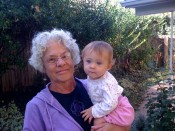Archive for Toxic Foods
Next Step for Clean Food
Posted by: | CommentsLet’s look at another way to make healthy changes in the way we eat. This time we are going to focus on what is essential in our diet, and which items are just plain dangerous. What things do we need to have as a part of our meals and how does this look when we get to the grocery store?
If we reduce the grocery list to the bare essentials it could look like this: vegetables, fruit, protein, grains, seeds, nuts, and dairy. Paper products, cleaning products, and personal hygiene products are not foods, so they are a separate expense, and just for the moment we will take them off the grocery list.
When we get back to basics, the handiest way to get there is to use a menu. You don’t have to make them up yourself; you can find endless menus on line. The advantage of making them up yourself is taking into consideration your families likes and dislikes, needs and eating patterns. Some people need 6 small meals a day – more like a series of snacks – and another person likes 3 meals a day. You get the idea. Another thought…eat less of everything to reduce your food bill. In America, we are sending 40% of the food we grow to the landfill! So waste not; want not!
Let’s get into why I buy foods that fill a specific criterion. Let’s take one typical breakfast as an example. I am a person who needs protein and good fats in the morning or I am fading away by 10 am. Some days I have an egg (free range, vegetarian feed, no antibiotics), with mushrooms or green onions and cheese (no rBST), a piece of organic whole grain toast and butter with a little local, raw honey. Why the specific types of each ingredient? Read on…
Eggs from factory farms are not good for you. The hens are stressed so their eggs have high LDL cholesterol, and also antibiotics. The free range hens that are fed a diet high in grains, or better yet can forage outside, and don’t need antibiotics because they are not packed together tightly, give us eggs that are much lower in LDL cholesterol and much higher in HDL (or good) cholesterol. Stressed, unhealthy hens = unhealthy eggs. The original research on eggs being high in ‘bad’ cholesterol came from factory farms.
Let’s look at bread now. Bread never used to have ingredients we couldn’t grow and couldn’t pronounce. Most breads had whole ground grains, yeast or starter, water, salt, and maybe an oil. It was that simple. It was made fresh and sold fresh, so no preservatives were needed. We can still get bread like that. However there is one more problem now. If the ingredient list contain any corn products, any soy products, and/or any canola oil, (and is not organic) you are eating a Genetically Modified Organism (GMO) which contains pesticides in every cell. I can find bread that is ‘clean’ and not organic in most supermarkets; however it is just as cost effective to buy organic bread on sale and freeze it. Are you getting the idea? Local raw honey is good for me and helps protect me from local pollen allergies if I have a teaspoon or so a day.
If we simply cut out the foods that, as Michael Pollan says, are “food-like substances”, we will decrease our food bills even if all the other foods we buy are clean and/or organic and more expensive. We will also decrease our medical bills. Here is a list of the “dirty dozen” foods no one should buy unless they are organic because of pesticide residue: Apples, Bell Peppers, Celery, Cherries, Imported Grapes, Nectarines, Peaches, Pears, Potatoes, Raspberries, Spinach, and Strawberries. If it is too expensive, buy on sale or have as a treat. If you want more information on these and other best green practices go to www.GreenAmericaToday.org or other similar websites.
So the key concepts to changing the way we eat might be summed up this way: simplify; buy and eat whole foods; learn how to cook them; read the labels and avoid GMO’s; and beware of all the toxins in prepared foods! (www.care2.com/causes/study-finds-arsenic-in-baby-formula-and-cereal-bars.html)
